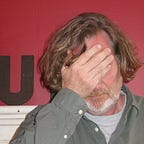RFBC #23: Wandering Stars
Is there any there there after There There?
Tommy Orange’s debut novel, 2018's There There, was a wow: the story of Native Americans living in present-day Oakland, California, that showcased a culture most mainstream readers knew nothing about. The book was a Pultizer Prize finalist, shortlisted for the 2019 Andrew Carnegie Medal for Excellence in Fiction, and won the 2018 National Book Critics Circle Award’s John Leonard Prize and the 2019 Hemingway Foundation/PEN Award.
His follow-up, Wandering Stars—long-listed for the 2024 Booker Prize—is both prequel and sequel to There There. It’s an extended family story that begins about 150 years before the events of There There, with the survival of the 1864 Sand Creek Massacre by an Indian boy who, as a man, adopts the name Jude Star : the great-great-great-grandfather of the three Red Feather boys we met in There There, and whose lives we catch up with in the new book.
That is, if we’d read There There, which Orange has said is not required. We may or may not have felt otherwise. It was part of our discussion on the May 2024 edition of Radio Free Book Club. As usual, spoilers follow—so please come back after you’ve read the book if that sort of thing bothers you. And please consider streaming the podcast, which you can probably find on the podcast player of your choice.
Show notes:
The RFBC crew for our December 2023 show was Indianapolis writer Ken Honeywell; author and ex-Butler University English professor Susan Neville; writer and budding romance novelist Kate Shoup; and writer/baker/hiker/dog mom Traci Cumbay. Our show was recorded at Listen Hear in Indianapolis and produced by our friend Galileo for 99.1 WQRT-LP.K
Any There There there? Neither Traci nor Kate had read Orange’s first novel. Susan and Ken had—but Ken admitted to not remembering the characters from There There, and didn’t recognize the prequel/sequel nature of Wandering Stars until he picked up There There again after reading the second book. While he agreed it wasn’t strictly necessary to read the first book, he said reading them together made for a richer experience.
That historical nonfiction prologue... Ken insisted it wasn’t necessary, since all of it was covered in the fiction that followed. Nobody else seemed to care.
…but all the historical fiction. Although a couple of us found all the shifting viewpoint characters and points of view difficult to track, much of the history, especially regarding the Carlisle School, was fascinating. Susan was familiar with the school, thanks to Jim Thorpe, All-American—Thorpe attended the school and was played by Burt Lancaster, Susan’s first Hollywood crush, in the film—but we were largely unaware of the history of working to eradicate Indian culture. We agreed that Richard Henry Pratt, who ran the school, was a sympathetic and even tragic figure. His assimilationist motto was “Kill the Indian, save the man”: horrible in retrospect, but progressive for a time when the alternative was segregation at best.
A fair comparison? Susan mentioned that Tommy Orange and Kaveh Akbar are friends, and actually shared pages of Wandering Stars and Martyr! every week while they were writing their novels. Both books feature characters struggling with addiction and identity. Those of us who’d read both tended to prefer Martyr, but there might also have been some local bias there; like Akbar, Traci received her MFA from Butler, where Susan taught and Ken got his BA.
A screwy timeline. We were all charmed by Lony—but we weren’t sure what was going on at the end from a timeline standpoint. The exploits depicted in the second half of Wandering Stars occurred in 2018, when Lony was just entering junior high school—so he’d have been, let’s say, 12 years old. He describes his high school days, so we assume at least six years went by. Then he’d been out in the world for another six years or so before he wrote his letter to the family, which places the year somewhere around 2030, meaning it’s set in the future. All well and good—except that Loother has a new baby with his high school girlfriend, and twelve years seems a long time to wait for that. A mistake? Maybe. Does it matter? Not really. But it’s interesting.
Would we recommend it? We were mixed. Traci, in her usual blunt style, was a hard no. Kate’s no was a bit more diplomatic: She praised the writing, but the story didn’t hang together for her. Susan was a qualified yes, and expressed interest in reading Orange’s work in the future. Ken recommended reading There There and going from there.
Bonus recommendations: Traci was devastated by, and recommended, Paul Lynch’s Booker Prize-winning Prophet Song. Speaking of the Booker Prize, Susan recommended two past finalists: The Bee Sting by Paul Murray and Booth by Karen Joy Fowler. Kate, who’s been working on a romance novel, had been reading romance pretty exclusively, and declined to recommend anything she’d been reading. Ken recommended the audiobook version of Seamus Heaney’s translation of Beowulf, read by Heaney in his seductive Irish lilt.
Next month: We try to figure out what’s going on in The Other Valley, a trippy, original take on time travel by first novelist Scott Alexander Howard. Hope you can join us.
